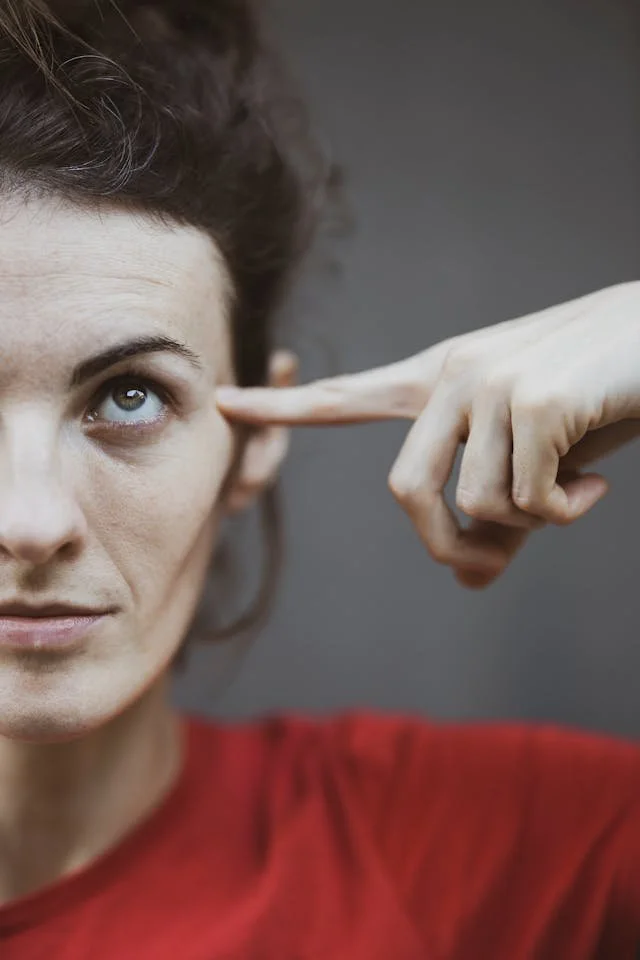Anxiety Isn’t Just in Your Head
When most people think about anxiety, they picture racing thoughts, constant worry, or overthinking every detail. But anxiety is not only a mental experience. It is also physical, deeply rooted in the body’s stress response. The tight chest, racing heart, sweaty palms, and upset stomach that come with anxiety are not “in your imagination.” They are real biological reactions.
In anxiety therapy, one of the first things clients learn is that anxiety is not a flaw in their thinking or a sign of weakness. It is a survival response that the brain and body activate when they sense danger. Understanding this connection helps people move from frustration and self-blame to compassion and control.
Anxiety as a Full-Body Experience
The Brain’s Alarm System
The brain’s amygdala is responsible for detecting threats and activating the fight, flight, or freeze response. When it perceives danger—real or imagined—it floods the body with stress hormones like cortisol and adrenaline.
The Body’s Physical Response
Once those hormones are released, the body reacts. Your heart rate increases to pump blood to muscles, your breathing quickens to deliver oxygen, and digestion slows so energy can be redirected. These changes are meant to keep you safe. The problem is that in modern life, the “threats” are rarely physical. They are emails, traffic jams, or difficult conversations. The body responds as if you are being chased by a tiger.
The Feedback Loop
When the body reacts, it can send signals back to the brain that something is wrong. A racing heart or tense muscles may increase feelings of fear, creating a loop where body and mind keep amplifying each other.
Why Telling Yourself to “Calm Down” Doesn’t Work
If anxiety were purely mental, logic alone would solve it. You could simply reason your way to calm. But because anxiety involves the nervous system and hormones, it requires a physical reset too. That is why anxiety therapy often combines mental, emotional, and body-based tools to interrupt the cycle.
How Anxiety Therapy Addresses the Mind-Body Connection
Breathing and Grounding
Therapists teach grounding and breathwork to calm the body’s alarm system. Slow, deep breathing activates the parasympathetic nervous system, signaling safety to the brain.
Cognitive Restructuring
Once the body is calmer, it becomes easier to challenge unhelpful thoughts. Anxiety therapy uses cognitive restructuring to help clients identify distorted thinking and replace it with balanced, realistic perspectives.
Mindfulness and Present Awareness
Mindfulness helps people tune into the present moment rather than spiraling into future worries. This awareness connects the body and mind, reducing reactivity.
Somatic Awareness
Therapists often help clients notice where anxiety shows up in the body. Naming sensations—like tightness, heat, or tension—creates a bridge between mind and body and helps release stored stress.
Lifestyle and Regulation
Sleep, nutrition, hydration, and physical activity all influence anxiety levels. Therapy often includes exploring these areas to create holistic regulation.
Simple Ways to Soothe Anxiety in the Body
1. Ground Through the Senses
When anxiety spikes, focus on what you can see, touch, hear, smell, and taste. This sensory grounding helps anchor you in the present moment.
2. Use Progressive Muscle Relaxation
Starting at your feet and moving upward, tense and release each muscle group. This helps release stored tension and sends a “safety” signal to the brain.
3. Breathe Into the Belly
Deep belly breathing slows the heart rate and reduces physical agitation. Inhale through your nose for four counts, hold for two, and exhale through your mouth for six.
4. Move Gently
Walking, stretching, or dancing helps release adrenaline and calms the nervous system.
5. Give the Body a Message of Safety
Wrap yourself in a blanket, hold something soft, or place your hand over your heart. These grounding gestures communicate calm through physical comfort.
When to Seek Professional Support
If anxiety feels constant, interferes with daily functioning, or leads to panic attacks or exhaustion, professional help may be needed. Anxiety therapy provides structured tools that address both mind and body. Therapists can help you understand triggers, regulate your nervous system, and build coping strategies that create lasting calm.
You are not “overreacting” or “too sensitive.” Your body is responding exactly as it was designed to—it just needs help learning when it is truly safe.
Final Thoughts
Anxiety is not just in your head. It is a whole-body experience that blends emotion, thought, and biology. Understanding this truth can transform how you approach healing. Instead of battling your body, you learn to work with it, creating balance and calm through compassion and awareness.
Anxiety therapy helps you reconnect with your body as an ally rather than an enemy. When mind and body work together, you can finally find the peace that logic alone could never provide.

